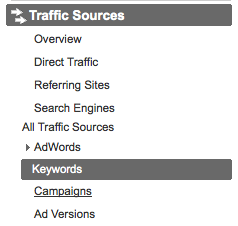What to do if you are concerned with your website’s bounce rate
In yesterday’s Mequoda Daily article we discussed bounce rates. These percentages have brought a perplexed look to the faces of online publishers since they began seeing the analytics behind them.
The questions have been posed, “Why is my bounce rate at 50%? Is this a bad bounce rate? What can I do to lower my bounce rate in the future?”
For this scenario, a bounce rate at 50% means half of the visitors entering your site via a landing page are not going any further; they aren’t converting to registered member status and they aren’t going to other pages of your website.
Sure, a bounce rate could be better than 50%, but it isn’t necessarily considered a bad bounce rate. Let’s face it, not every person that stumbles upon your website is interested in all of the content you have. Perhaps they entered via one page that interested them and that was all they were looking for. Or maybe the visitor isn’t a true member of your core audience, which, in that case, you should be happy they didn’t bother to convert as your future correspondence would likely fall on deaf ears.
When it comes to a bounce rate, regardless of the actual percentage, the goal should be to lower it on a monthly basis – even if it only goes down by half a percentage point per month. That’s still progress on a subject that can be hard to pinpoint.
In order to help lower bounce rate, try this following exercise.
[text_ad]
An exercise for bouncing terms
This exercise has been taken from our upcoming Actionable Analytics webinar. The 90-minute program will be held live on December 14 and presented by Greg Krehbiel, the Director of Marketing at Kiplinger Washington Editors, Inc. This webinar contains loads of information on analytics, the numbers to pay attention to and 10 exercises that will help you improve the way you view the health of your online business.
To start this exercise on bouncing terms, begin by entering your Google analytics account. Under “Traffic Sources” find the “Keywords” tab and click on it.

This will tell you the keywords that bring visitors to your website the most.
Now, concentrate only on your top 100 keywords. Pull out the terms that identify your primary market and look at the bounce rates of those terms.
Next, find the landing pages for the terms with the highest bounce rates and compare them to the landing pages for the terms with low bounce rates.
While doing this, pay close attention to:
-Relevance of the keyword to the page
-The call to action on the page
-The navigation on the landing pages
Edits to these pages, with specific attention to the three bullets above may be the best idea for you. Additionally, use Google’s Website Optimizer to improve landing pages with poor bounce rates.
Our Actionable Analytics webinar discusses bounce rates, in addition to all of the necessary topics found in your Google analytics package. Join us to begin understanding your numbers better, so you can focus on making your website the best it can be.


